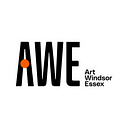Piloting a Digital Project as a Museum or Gallery
In a previous article, we established that museums and galleries must undergo digital transformations to remain relevant. But most museum and gallery staff do not have experience in the digital entertainment industry. How can they know what kinds of digital offerings would be best? Can they keep their existing audience while also attracting a new one?
Trial and error: Agile Project Management
When cultural institutions undertake a digital project, Agile Project Management is their best workflow option. According to digital product creation company Atlassian (creators of Trello), Agile Project Management is “an iterative approach to managing… projects that focuses on continuous releases and incorporating customer feedback with every iteration.” It helps teams “increase their development speed, expand collaboration, and foster the ability to better respond to market trends.” (2) Other advantages include faster feedback cycles and improved marketing time, better visibility and accountability, and, most importantly, higher potential for audience satisfaction. (3)
Releasing a pilot digital project is a major step in the agile process because audiences need a starting point — something to interact with and give feedback on. Once the museum or gallery pilots a project to receive initial feedback, they can respond by using the data gathered to improve the digital product.
Pre-production: Using what you know
What does this look like? Museums and galleries should survey their community, pre-production, to see what kinds of digital experiences people are interested in and to gather other useful findings. It can also be helpful for staff to brainstorm ideas in collaboration with a digital production company. Assembling knowledge about audience preferences and behaviour can be a useful first step, which a digital agency can combine with their own data and experiences. When the Art Gallery of Windsor was in the early stages of developing their forthcoming digital project, they knew from extensive community consultation that people wanted to see more of their incredible art collection, and more art outside the art gallery walls. These findings became the foundation for the project currently under development.
Two considerations
When developing ideas for your museum, it is important to remember two things. First: rights and permissions. Does your institution have the rights to use certain images, sounds, narratives, etc. as a part of your digital project? If the materials in question are held under copyright by an individual artist or large organization, there may be serious legal consequences for using those materials without permission. Second: cultural sensitivity. Museums need to employ a “nothing about us without us” approach to the creative development of their projects. Community consultation should be conducted so the digital creations being developed do not cause harm to those communities.
Beta-testing the first iteration
Once your institution has a solid idea developed, a beta version of the digital product can be created and released. Product user data from the pilot’s first iteration should be gathered and analyzed. Users’ interactions should be observed and recorded, and user experience data should be used by product developers to determine what works and what doesn’t, to implement in the second iteration. Feedback can be gathered from users digitally, on paper, or verbally, in-person. Encouraging feedback through the use of incentives (e.g., discounts and prizes) can be quite effective.
Questions to ask
Cuseum, a company that offers institutions digital engagement solutions, has some helpful questions museums can ask audiences when seeking feedback on their digital pilots:
· Did this product make it easier for you to learn or access information?
· Did it enhance your overall experience of our museum/gallery?
· Would you recommend this experience to a friend?
· How would you describe this experience in one word?
Each institution can also add questions that reflect their own goals for the project. They can probe how they want their audience to feel, or what they want their audience to take away from the project.
Length of Pilot
How long should a pilot go on for? Paul Roberts of Strategy Activist, a UK-based company that helps companies pilot projects, states that three to six months is an ideal timeframe, and that fewer than three months won’t cut it. (4)
Of all the variables to consider when piloting a digital project, the hardest one to accept is potential failure. But Roberts states that failure is okay because it is part of the learning process. (4) Failure eliminates what doesn’t work. Failure takes you one step closer to what does work. And in the context of agile project management, several small, short-term failures that can be easily amended are preferable to the alternative — a large investment into a digital project that immediately flops. To succeed, your museum or gallery must embrace every reality that emerges through the agile process to create a final product worthy of your time and resources. Progress does not occur without failure.
Written by Micaela Muldoon
